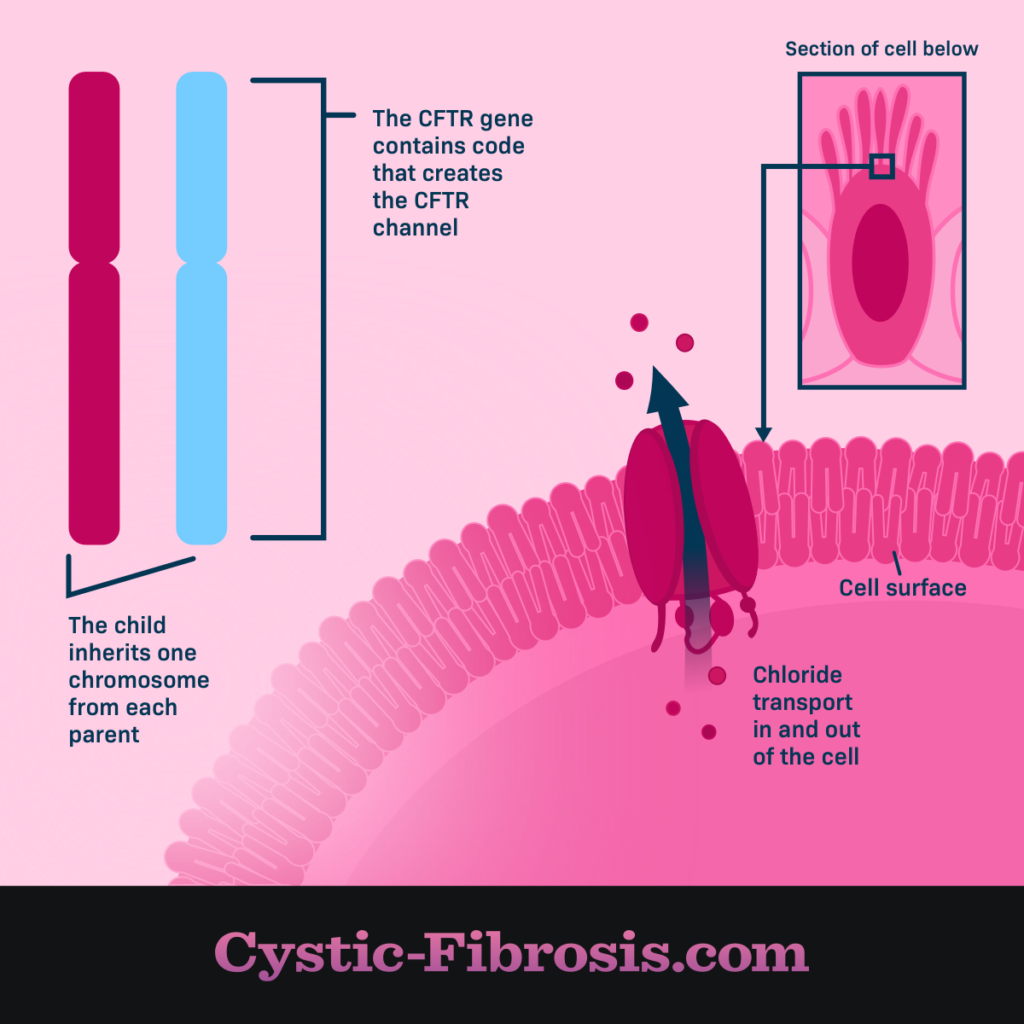Cystic fibrosis (CF) is a life-threatening genetic disorder caused by mutations in the cystic fibrosis transmembrane conductance regulator (CFTR) gene. This gene is responsible for encoding the CFTR protein, which regulates the flow of chloride and water across cell membranes. When mutated, the protein fails to function properly, leading to thick mucus buildup in the lungs, pancreas, and other organs.

Classes of CFTR
CFTR mutations are categorized into six main classes, depending on how they affect the protein:
- Class I (No Protein Production): The CFTR gene produces little or no protein due to premature stop codons.
- Class II (Misfolded Protein): The protein is created but fails to reach the cell surface (e.g., F508del, the most common mutation).
- Class III (Gating Defect): The protein reaches the surface but fails to function properly (e.g., G551D mutation).
- Class IV (Conductance Defect): Chloride flow through the CFTR protein is reduced.
- Class V (Reduced Protein Production): Less CFTR protein is produced, but it functions correctly.
- Class VI (Unstable Protein): The protein reaches the surface but degrades too quickly.
Certain CFTR mutations are responsive to modulator therapies, allowing patients with these mutations to benefit from targeted treatments.
CFTR Modulator Therapies: Revolutionizing CF Treatment
CFTR modulators are medications designed to improve the function of the defective CFTR protein, targeting specific mutations. These drugs work by either correcting misfolded proteins, improving channel opening, or stabilizing the protein at the cell surface.
Types of CFTR Modulators
- Potentiators: Improve CFTR channel opening and chloride transport (e.g., ivacaftor).
- Correctors: Help misfolded CFTR proteins reach the cell surface (e.g., lumacaftor, tezacaftor, elexacaftor).
- Amplifiers: Boost CFTR protein production (still in development).
Approved CFTR Modulator Therapies
| Drug | Function | Approved Mutations | Minimum Age |
|---|---|---|---|
| Ivacaftor (Kalydeco) | Potentiator | G551D and other gating mutations | 1 month |
| Lumacaftor/Ivacaftor (Orkambi) | Corrector + Potentiator | F508del (homozygous) | 1 year |
| Tezacaftor/Ivacaftor (Symdeko) | Corrector + Potentiator | F508del (heterozygous) & others | 6 years |
| Elexacaftor/Tezacaftor/Ivacaftor (Trikafta) | Triple Combination Therapy | At least one F508del mutation | 2 years |
These treatments have significantly improved lung function (FEV1), reduced exacerbations, and enhanced quality of life for CF patients with responsive CFTR mutations.
The Latest Advancement: Alyftrek
The newest addition to CF treatment is Alyftrek, a once-daily triple combination therapy containing:
- Vanzacaftor (Corrector)
- Tezacaftor (Corrector)
- Deutivacaftor (Potentiator)
Alyftrek has been approved for individuals aged 6 and older with at least one responsive CFTR mutation. It offers improved efficacy and a more convenient dosing regimen compared to previous CFTR modulators.
Identifying Responsive Mutations
Not all CFTR mutations respond to modulators. Genetic testing helps determine whether a patient carries a responsive CFTR mutation, allowing personalized treatment.
Key Characteristics of Responsive Mutations
- Mutations that allow CFTR protein to reach the surface can often be treated with potentiators.
- Mutations that cause misfolding respond well to correctors.
- Mutations leading to minimal protein production may not respond to current modulators.
Future Directions: Gene Therapy and Advanced Treatments
While CFTR modulators have transformed CF care, they do not cure cystic fibrosis. Researchers are exploring gene therapy and gene editing technologies like CRISPR-Cas9 to correct CFTR mutations at the DNA level.
Emerging CF Therapies
- Gene Editing: Directly repairs cystic fibrosis with responsive cftr mutation in patient cells.
- mRNA Therapy: Provides cells with correct CFTR instructions.
- Stem Cell Therapy: Aims to replace damaged lung tissue with healthy cells.